Odd Gramatical Terms in Dutch Grammar – Pt. 2: Verbs Posted by Sten on Apr 18, 2016 in Dutch Grammar, Dutch Language, Dutch Vocabulary
If you have studied any language, or even just English, you have come across terms for the types of words and word combinations in the language. You might have also come across the widespread Latin terms for cases: nominativus, accusativus, dativus, genitivus, or even an ablativus. This is to identify the role of nouns in a sentence. These were discussed last week in the first post.
There are also designations for verbs, for example infinitivus or imperativus. In many languages, these terms have been modified to make better understandable what these terms refer to. These are discussed this week! Next week, there will be a little test for you to try out and see how good you are at this!
In the Netherlands, they came up with a wide range of them. I personally did not find them to be of such great help in school, but nonetheless they are an integral part of learning Dutch. Why? If you know how a sentence is put together, what belongs where, if you have a structure to hold on to, it is much easier for you to understand the weird structure Dutch can have sometimes.
Here is a list of the most common terms and their English counterparts, with examples. In parentheses after the translation (= “…”) is the literal translation of the Dutch words to English, to make their meaning clearer.
1. Verb – werkwoord (= “work word”)
example: to punch
2. Infinitive – hele werkwoord (= “whole work word”)
example: to punch
3. Active verb – persoonsvorm (= “person form”)
example: Mark punches Tom
The persoonsvorm is the verb that just says what the onderwerp (subject) is doing. It describes what the action is, in this case punching. The Dutch persoonsvorm makes sense: it is the personal form of the verb. It is conjugated according to the subject (e.g. if two people punch Tom, the verb changes from “punches” to “punch”).
In “Tom was punched by Mark”, Tom is the subject, “was” is the persoonsvorm (“was punched” would be the gezegde, see below). So even though this would be a passive verb in English terms, the Dutch just call it a persoonsvorm as well.
A tip to find the persoonsvorm in Dutch: make a question out of the sentence! “Mark punches Tom” = Mark stompt Tom. Q: Stompt Mark Tom?
The first word of the question sentence is the persoonsvorm – so stompt in this case! This also works for the passive: “Tom was punched by Mark” = Tom werd gestompt door Mark. Q: Werd Tom gestompt door Mark?
Werd is the first word, so that is the persoonsvorm.
4. Predicate – gezegde – (= “saying”)
example: Mark invites Tom to a dinner
The predicate normally just takes together the persoonsvorm and other connected parts of the sentence, in this case the invites to a dinner. It is all part of the gezegde! In the case of “Tom was punched by Mark”, “was punched” is the gezegde!
5. Predicate nominative – naamwoordelijk (deel van het) gezegde (= “noun wordal (part of the) saying”)
example: Mark is happy
The naamwoordelijk deel van het gezegde always says something about what somebody or something is. So, in this case, Mark is … Well, he is something – happy in this case. “Happy” refers only to Mark himself. Therefore, it is connected to the gezegde, as this says something about the onderwerp, the subject, of the sentence. So here, the naamwoordelijk gezegde is “is happy”. It should also fall under the gezegde, but is just a bit more specific.
Little bonus, but not that important: is in this sentence is a koppelwerkwoord (copula verb), which connects “Mark” with “happy”!
8. Auxiliary verb – hulpwerkwoord (= “help work word”)
example: Tom is invited by Mark
The hulpwerkwoord helps the hoofdwerkwoord (main verb) to convey its meaning. “Tom invited by Mark” does not make sense, no, it needs help to be complete – and so there is “is”! A hulpwerkwoord can also be, for example, “can” (Mark can punch Tom – “can” is the hulpwerkwoord here!), or a form of “to have” for a perfect time (e.g. has punched, has been punched). So, the hulpwerkwoord is just there to help the main werkwoord make sense!
7. Adverb – bijwoord (= “by word”)
example: Mark happily invites Tom to a dinner
The bijwoord says something about the verb (adverb – it “adds” something to the verb). It details further how the action is performed. So here, Mark not just invites Tom, he does so happily!
Next week, you can try to do this yourself! Can you do it? Good luck!

Build vocabulary, practice pronunciation, and more with Transparent Language Online. Available anytime, anywhere, on any device.
About the Author: Sten
Hi! I am Sten, both Dutch and German. For many years, I've written for the German and the Dutch blogs with a passion for everything related to language and culture. It's fascinating to reflect on my own culture, and in the process allow our readers to learn more about it! Besides blogging, I am a German-Dutch-English translator, animator and filmmaker.




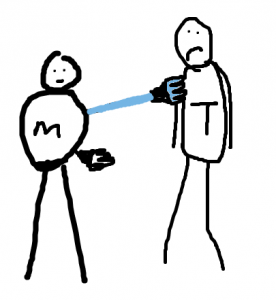
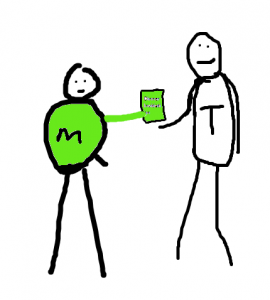
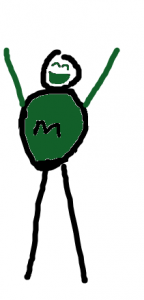
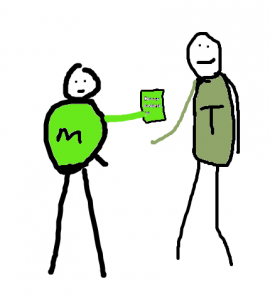
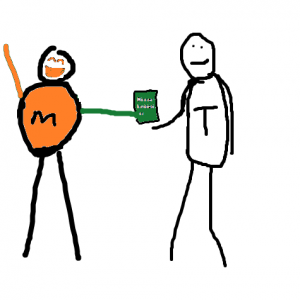

Comments:
Guy Vollemaere:
Hello,
I just want to say that Dutch is also spoken in Belgium (Flanders), as one of the three national languagesn(Dutch, French and German). It is, amongst others, also spoken in Suriname.
Kind regards,
Guy Vollemaere
Charles Laster:
I like these terms better than the English-speaking versions!